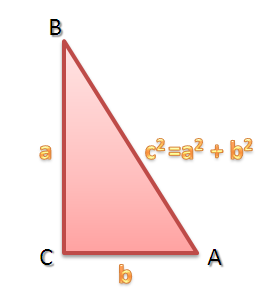Pythagorean Theorem, Distance Formula, and Equation of a Circle
In my Algebraic and Geometric Proof of the Pythagorean Theorem post, we have learned that a right triangle with side lengths and
and hypotenuse length
, the sum of the squares of
and
is equal to the square of
. Placing it in equation form we have
.

If we place the triangle in the coordinate plane, having and
coordinates of
and
respectively, it is clear that the length of
is
and the length of
is
. We are finding the length, which means that we want a positive value; the absolute value signs guarantee that the result of the operation is always positive. But in the final equation,
, the absolute value sign is not needed since we squared all the terms, and squared numbers are always positive. Getting the square root of both sides we have,
We say that is the distance between
and
, and we call the formula above, the distance formula. » Read more